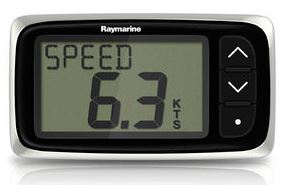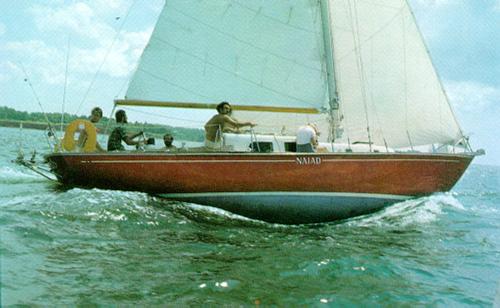
How can I make my sailboat go faster?
You often hear sailors talk about hull speed – the maximum speed that a certain boat can travel through the water. This seems counter-intuitive, surely a more powerful engine can push a boat faster than a less powerful engine? Well yes, but only up to a point.
As the hull of a yacht travels through the water, it displaces any water that was in its way. Such hulls are therefore known as displacement hulls.

Do speed boats have an inherent speed limitation?
Non-displacement boat hulls plane, or skim, across the top of the water. When planing, the boat’s mass is supported by the surface tension of the water rather than balanced by the mass of water that is being displaced through the Archimedes Principle. Planing hulls are not constrained by hull speed. The speed limitation for planing hulls is a factor of engine power and drag.
What is the most important factor in the hull speed of a sailboat?
When we discuss our sialboats, we usually talk about a boat’s length overall (LOA). But when it comes to establishing a boat’s hull speed, the relevant measurement is actually the load waterline length (LWL). This is the horizontal length of a hull at the water’s surface when a boat is carrying a normal load. All other things being equal, this is the single most determinant factor in establishing how fast a boat can ultimately go.
Once you have the LWL, the hull speed in knots is given by a simple formula. Hull Speed in knots equals 1.34 times the square root of the waterline length in feet or…
HS [in knots] = ![]() [in feet]
[in feet]
Thus, for example, if you have a 35-foot boat with a waterline length of 28 feet, its hull speed works out to a little over 7 knots (1.34 x ![]() = 7.09). Alternatively, a 28 foot yacht with a LWL of 22 feet will have a hull speed of just under 6.3 knots – regardless of engine size. Therefore, careful consideration must go into over powering yachts when replacing diesel engines. The increased power may end up doing structural damage.
= 7.09). Alternatively, a 28 foot yacht with a LWL of 22 feet will have a hull speed of just under 6.3 knots – regardless of engine size. Therefore, careful consideration must go into over powering yachts when replacing diesel engines. The increased power may end up doing structural damage.
Why do displacement hulls have a maximum hull speed?
It’s all down to the laws of physics. Because the hull of a sailboat displaces significant amounts of water as it moves along, it inevitably creates two series of waves; one at the bow and another at the stern. These waves are governed by a law of natural physics. This states that the forward speed of a series of water waves (in knots) equals 1.34 times the square root of their wavelength. The wavelength is the distance between the wave crests. At slow speeds, these wave sets are separate but as the boat moves faster, the bow wave set and the stern wave set merge. As the boat approaches hull speed, there are just two wave crests; one supporting the bow of the boat and one supporting the stern.

At this stage, if the boat attempts to accelerate, then the bow wave would have to travel faster. This would require the wavelength to increase (because of physics) and the boat will fall off the stern wave. It then effectively needs to climb up its own bow wave. This slows the boat speed back down until the boat is again lifted by its stern wave. Thus, an equilibrium is reached at a speed equal to the maximum forward speed of wave whose wavelength is equal to the yacht’s LWL.
The exception to this is running in heavy weather where boats can sometimes surf down a wave.

Calculate your yacht’s maximum hull speed
First, head over to SailBoatData to check your boat’s LWL in feet. Then use our handy calculator below to work out your hull speed in knots.

